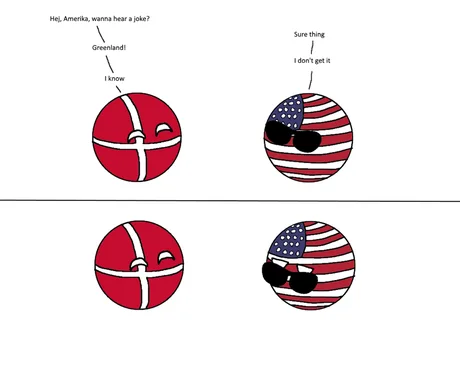During the Inter-War Years, many Germans (mostly centre and right wing) believed in the "Dolchstoßlegende": The idea that the German army hadn't been defeated by enemy armies at the front; the problem in 1918 had supposedly been those socialists who stabbed the army in the back by causing trouble at home.
It was utter bollocks. The supreme army command had strongly urged the civilian government to plea for peace after the army had badly failed on the Western Front on August 8th, 1918; the successful beginning of the Western powers' offensives of 1918.
The army in the field had failed to hold the front lines because it was exhausted.
__________
The problem was relatively simple, but rarely appreciated by authors: A robust defence isn't only about men, guns and terrain. It requires effective counter-attacks. Some losses of positions are bound to happen if dangerous hostiles launch an offensive against you. These need to be counter-attacked to save the position unless you're willing to trade land for blood. The German generals in August 1918 were not willing to trade land for blood; they knew that later lines of defence farther to the back (behind the main line of resistance) would have much worse field fortifications. It was less horrible to fight where they were.
The only way to hold a line for long without counter-attacking successful break-ins is to make the line strong up front. This means many - not few- men far forward. Far forward; that's where the hostiles observed the best, where their artillery was the most powerful and where their tank attacks still had cohesion and most tanks were still mobile. It had been understood long before summer 1918 that having many men far forward was too bloody and the resulting defence was brittle in face of powerful offensives and an eventual failure of such a stiff, brittle defence would be much worse than the failure of weak forward elements of an elastic defence.
The problem by August 1918 was that there was war.
Another problem - which concerned almost exclusively generals and politicians - was that there had been a bloody war for such a long time that the ability of the army to counter-attack locally had been diminished too much. The elastic defence had failed as well.
Now how had the ability to counter-attack locally been diminished precisely? In addition to the battles of 1914-1917 (the pre-War troops below rank of battalion staffs had been 'spent' by 1916 at the latest), lots of losses had been suffered earlier in 1918 during German offensives of unprecedented 'success'. (Malnutrition and the flu epidemic were other problems.)
In order to achieve the required breakthroughs, Germany had mustered in addition to the usual means a couple tactical and organizational innovations, most notably Bruchmüller's artillery plans and some of the first (finally) seriously trained modern infantry. These German infantry units were similar to Russian and Italian efforts at creating specialised assault infantry in that they finally trained properly and equipped properly for the task. The German assault troops were quite numerous; many were raised in order to enable breakthroughs in many places simultaneously. German army formations and basic training units had to send the best infantry for the attack to this training and employ them in breakthrough attacks.
The tactical success was striking, but so were the losses. The German army had exposed its best assault infantrymen to fire and burnt them. They weren't left for local counter-attack any more.
__________
So what kind of troops are 'the best' for assaults? The junior officers of the time knew this by observation, but the 20th century was bloody enough to teach us a lesson or some and we can actually make some general observations about who is likely better-suited for assaults than average troops are.
(a) Men who are married with children (or simply very much in love) tend to have more survival instincts. This means they're not as aggressive as single men. They do not tend to give up easily under pressure, which makes them suitable for tactical defence.
(b) Stupid men do stupid mistakes and die too easily.
(c) Smart men are smart enough to understand dangers, and thus to avoid them. Dangers such as assaulting entrenched infantry.
(d) Older men are typically not fit enough (especially a hundred years ago) for much infantry action.
(e) Men older than something around 30 tend to be less daring than young men.
(f) Men from rural background did tended to be superior to urban men for warmaking that involved close combat. This was a recurring theme from late Roman antiquity till sometime after WW2. It was likely about better nourishment and cleaner water and may no longer be relevant.
So the ideal assault infantryman of 1918 came from a rural area, had normal intelligence, was adult but not older than late 20's, single and had no children.
The First World War consumed these men at an astonishing pace, and several warring countries fell once they had lost too many of them (Russia, Austria-Hungary, Italy, Germany, France only almost in 1917). The same happened to Germany in WW2 and even to the Soviet Union in WW2; that's why the Red Army of late WW2 had to emphasize artillery and tanks in their assaults so very much: Artillery and tank troops required fewer troops for combat power. Infantry was still employed in great numbers, of course - but it was the weakest pillar of Red Army combined arms attacks by 1944.
Similarly, the German army of 1944 had to emphasize artillery fires as the main pillar of defence because the thinned-out infantry was only capable of maintaining a thin screen.
__________
I'm totally in favour of not doing any experiments about total warfare ever again, but there's still an interesting facet to this: The usual notion is that we have now a youth that's much less suitable for warfare than earlier generations. Yet I cannot see a great many married men with children below age 30 here. It was common to be married by the mid-20's (for life) and have children early in the 20th century. This isn't normal any more. Instead, relationships of young men are rather temporary in nature.
The advantage of "rural" recruits certainly waned, so the entire description of the ideal assault infantryman is now much more representative of young men age 18-29 in Western Europe than ever before. Obesity is rare in that age group.
You may think that we have few men in the relevant age group due to demographic change. I assure you, that's nonsense. Germany has more than 10 million men of military age, more than five million men in their 20's and roughly four million are citizens. I doubt anyone knows a plausible scenario for war in which we would run out of men to draft (unless one assumes that a catastrophe have already killed tens of millions of Germans).
You may think that we have few men in the relevant age group due to demographic change. I assure you, that's nonsense. Germany has more than 10 million men of military age, more than five million men in their 20's and roughly four million are citizens. I doubt anyone knows a plausible scenario for war in which we would run out of men to draft (unless one assumes that a catastrophe have already killed tens of millions of Germans).
S O
defence_and_freedom@gmx.de
related literature: http://cgsc.contentdm.oclc.org/cdm/ref/collection/p16040coll3/id/122
related literature: http://cgsc.contentdm.oclc.org/cdm/ref/collection/p16040coll3/id/122




